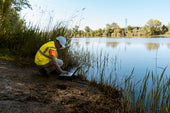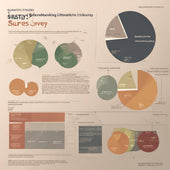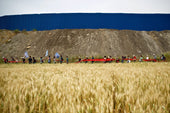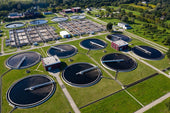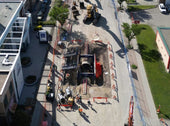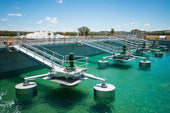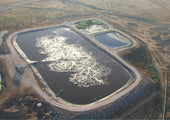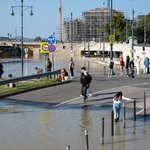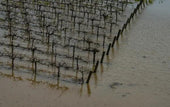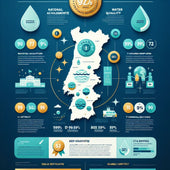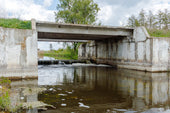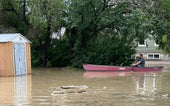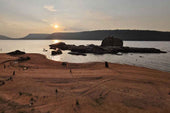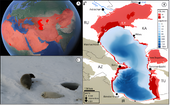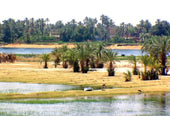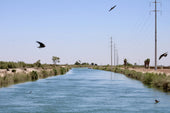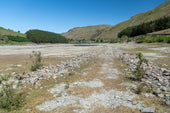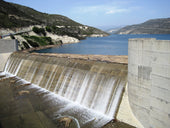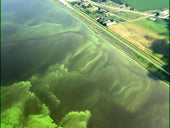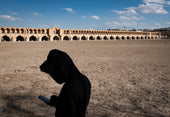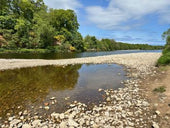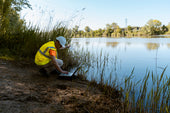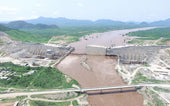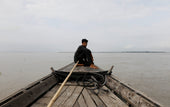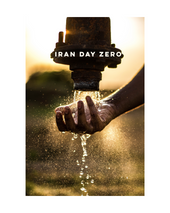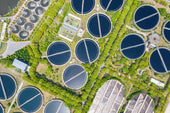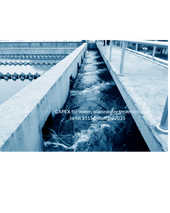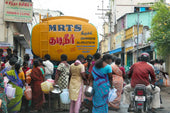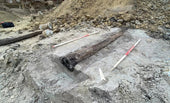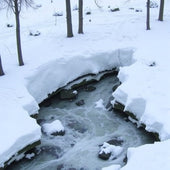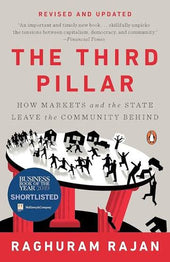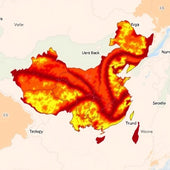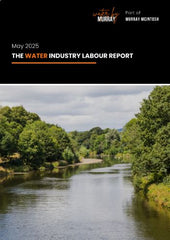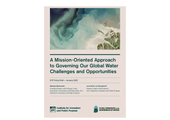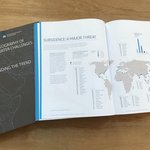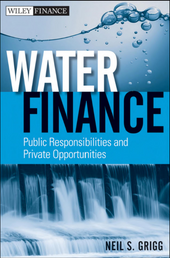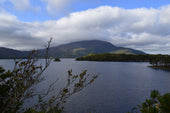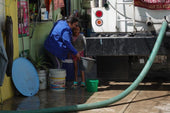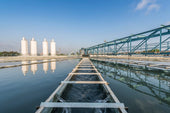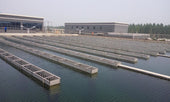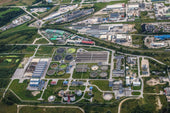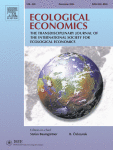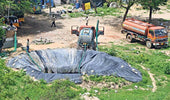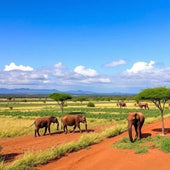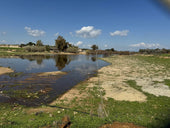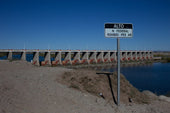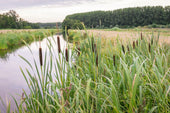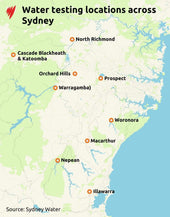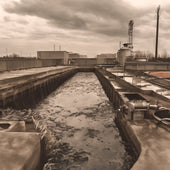
Urban water scarcity and drought: A case study from semi-arid Bursa, Türkiye
Semanur Coskun
Semanur Coskun (Çanakkale Onsekiz Mart University, Türkiye), Abdullah Akbas (Bursa Uludağ University, Türkiye)
As one of Türkiye’s fastest growing cities, Bursa needs to consider how available water resources can be managed to supply a growing population in a time of climate change. Here, Semanur Coskun and Abdullah Akbas discuss their analysis of the city’s main water supply, the Doğancı Dam, to understand and examine the role of climate and population changes, and how these variables interact with water scarcity in the urban center.
The Mediterranean basin is one of the regions that will be affected by climate change. As part of this region, Türkiye is an important area that will be affected by drought and water scarcity in the future. It is predicted that there will be an increasing problem in water availability and water scarcity in Türkiye with climate change.
The city of Bursa in northwestern Türkiye is expected to experience water scarcity if necessary measures are not taken. The city has a semi-arid climate under the influence of the Mediterranean. Drought is experienced in the summer months. Under the influence of the Mediterranean climate, winter and fall are the wettest seasons and summer is the driest season.
Water management plans should be made and problems should be solved by determining the urban (domestic, industrial, etc.) population-based supply-demand relationship for Bursa city. While this is not a problem now, it could be a problem in coming years. Our study is important in terms of producing projections for the future in the city of Bursa.
According to the United Nations and UNESCO reports, water resources are gradually decreasing, water shortages are experienced in large cities, and it has become imperative to understand the water demand and to make predictions for the future. In terms of urban water demand, the population of Bursa is increasing day by day, which increases the demand for water. In this study, while the amount of water is decreasing with climate change, on the other hand, the population of Bursa, one of the largest cities of our country, is constantly increasing. Bursa is one of Türkiye’s fastest growing cities. According to 2020 TÜİK (Turkish Statistical Institute) data, Bursa is the fourth largest city in Türkiye with 3,101,833 inhabitants. Over 2.1 million of these people live in Bursa’s urban center.
The Doğancı Dam (see banner image) is the only dam that provides water to the large, dense population living in the urban area. The dam is located within the borders of Bursa city, covering an area of approximately 446.3 km2. The water needs of Bursa city are supplied by surface water resources, groundwater sources and springs. Our study was conducted on this basin since the city obtains approximately 85% of the water it needs from the Doğancı Dam basin.
In this study, multiple data sets were analyzed for the Doğancı basin to understand and examine the role of climate and population changes in the reservoir on drought and water scarcity in the urban center. In addition, future dam volume anomalies and drought index were obtained from climate model results based on various projections. Based on the relationship between population and dam volume, urban water demand and future situation for Bursa city was calculated. For this task, we used the Support Vector Machine (SVM) method to predict the volume changes and quantities of Doğancı Reservoir. The volume of Doğancı Dam was modeled using meteorological and hydrological data.
The results obtained in line with the analyses and projections show that there is a general increase in drought conditions affecting the dam, a general trend of increasing drought in the dam volume, and an increase in water consumption in Bursa city in proportion to the population growth over the years. The amount of water and water consumption by the population can fluctuate, leading to changes in water scarcity over time. Therefore, even if total water remains constant, increasing population demand contributes to increasing water scarcity. In the Doğancı Dam basin, which is the main water reservoir for the urban area of Bursa, projections for the future show a decrease in per capita water availability, indicating water scarcity. This finding also showed that if water availability cannot be balanced with population, other available resources (groundwater and springs) will be depleted in the future.
In order to obtain future values of dam volumes, dam volumes were calculated by SVM based on Representative Concentration Pathway (RCP) 4.5 and RCP 8.5 scenarios using RegCM (Regional Climate Model) data. The reference period was compared with RCP 4.5, RCP 8.5 near and far future scenarios. While the amount of water per capita is 11479 liters per month in the reference period, this value is 5319 liters in the RCP 4.5 near future scenario and 3830 liters in the RCP 4.5 far future scenario. While the amount of water per capita is 5514 liters in the RCP 8.5 near future scenario, it is 3770 liters in the RCP 8.5 far future scenario. The amount of water per capita has decreased compared to the reference period. Decreases in the volumes in the dam were also observed compared to the reference period.
Our research highlights the need for planning on urban water demand that takes into account both population growth and climate change. Moreover, it emphasizes that urban areas in Mediterranean climates are more vulnerable than areas in other climates. For effective water management in urban areas such as Bursa, it is crucial to promote water-saving technologies, encourage the adoption of rainwater harvesting systems, and develop policies that optimize water use to reduce reliance on groundwater and springs, especially in summer.
More information: Semanur Coskun semanurcoskunn16@gmail.com
For more details on the information presented here, see:
Coskun S & A Akbas (2024). Revealing the future complexity of urban water scarcity and drought via support vector machine: Case from semi-arid Bursa urban area. Urban Climate 58, 102211. https://doi.org/10.1016/j.uclim.2024.102211
Semanur Coskun, is a PhD student at the Department of Geography, Çanakkale University, Türkiye. Her research interests include climate change, hydrology, natural hazards and wildfires.
Abdullah Akbas, Assoc. Prof. Dr. Abdullah Akbaş works at the Department of Geography, Bursa Uludag University, Türkiye. His research interests include Physical Geography, Disaster Management, Watershed Management and Planning, Hydrology-Hydrometeorology, Climate Change and Climate Modeling, Geographic Information Systems and Remote Sensing.
The views expressed in this article belong to the individual authors and do not represent the views of the Global Water Forum, the UNESCO Chair in Water Economics and Transboundary Water Governance, UNESCO, the Australian National University, World Bank, Oxford University, or any of the institutions to which the authors are associated. Please see the Global Water Forum terms and conditions here.
Banner image: An image of the Doğancı Dam provided by the General Directorate of Bursa Water and Sewerage Administration.

